By: Christina Maslach
Whenever the topic of job burnout gets raised, the first question asked is usually, “What can we do about it?” Indeed, the drive to discover solutions is so prevalent that the e-journal that I coedit, Burnout Research, has just sent out a call for a special issue on “Challenges of Doing Burnout Interventions.”
Although many different ideas have been proposed about how to deal with burnout, very few of them have ever been implemented or evaluated—or even publicized systematically. So there may well be a rich source of untapped experience about the obstacles and challenges that exist concerning doing burnout interventions, and we are hoping to find authors who will share their insights and lessons learned from actual attempts to solve the burnout problem.
I have also learned some lessons about solutions for burnout. I have done this from the perspective of a researcher who has interviewed and observed people in various occupations and work settings and who has tried to distill the key themes that have emerged from many kinds of empirical data. These lessons that are the focus of my article for a special issue on workplace fatigue in the Consulting Psychology Journal. Although burnout is a broader concept than chronic fatigue, I think there are several key issues that are relevant for both.
The first involves the psychology-centric focus of work on burnout. This psychological approach has made many positive contributions to our understanding of the burnout phenomenon, but it also has had some negative effects in terms of its bias toward focusing just on the individual and clinical deficits. A second is the bias toward fixing people, rather than fixing the job situation. The literature on health, stress, and coping has generated many ideas about how to help the individual person become more resilient and efficient. But there is a relative dearth of ideas on how to modify or improve the job environment in which individuals work.
However, newer models that take in to account both the person and the job, as well as the fit or balance between them, may be a better path toward effective solutions. More specifically, the Areas of Worklife (AW) model proposes that major misfits between the person and the job can take place within six interrelated areas: workload demands, control, reward, community, fairness, and values. The greater these misfits or imbalances, the greater is the risk of burnout; conversely, the greater the fit between person and job in these six areas, the greater is the likelihood of engagement.
Recent research suggests that the six areas in the AW model can be used as a kind of diagnostic tool to identify important job-person mismatches, thus providing a clearer picture of what the goals of an effective intervention might be. By “customizing” an intervention to take into consideration more probable causes, rather than relying on more standard, one-size-fits-all approaches, practitioners would have a better chance of preventing burnout and building engagement throughout the workplace. Similarly, another approach interprets job-person “fit” in terms of the satisfaction of core psychological needs: autonomy, belongingness, competence, psychosocial safety, positive emotions, fairness, and meaning. Both models can provide a new framework for defining a healthy workplace in which employees can thrive and succeed, and this could have important implications for how to redesign the workplace to make burnout less of an occupational hazard.
Consulting Psychology Journal: Practice and Research publishes evidence-based articles that advance the body of professional knowledge and expertise for providing psychologically based services to improve organizations and the people who work in them. It is a unique peer-reviewed journal; CPJ articles meet scientific standards for rigor and support but are also readable, practical, and actionable.

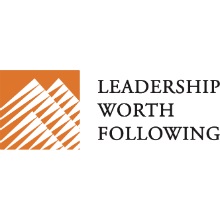


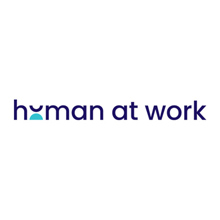
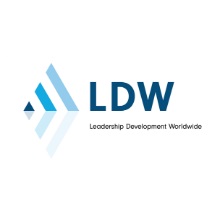
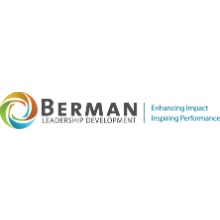
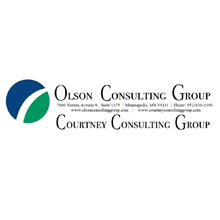
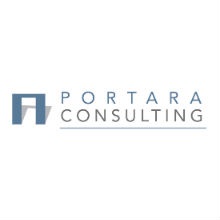
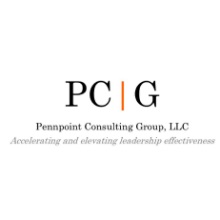


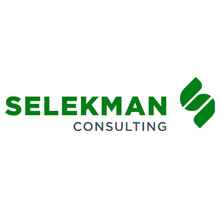
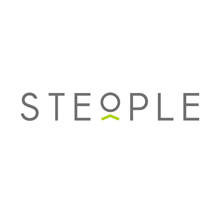


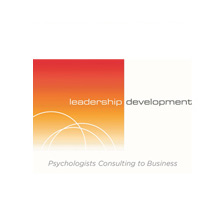
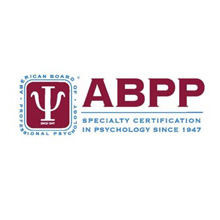
Response to Christine Maslach’s article posted on LI 8/26/2017 Sandra Foster, PhD, PCC Success at Work and Lillian LeBlanc, PCC, Executive Leadership Development Coach for Baptist Health South Florida Sandra: We thank Christine Maslach for her contribution to CPJ’s special issue with her article on burnout. She has helped us, as consultants, examine burnout from an individual as well as a broader perspective of “fixing the job.” The AW model “frames job stressors in terms of person-job imbalances, or mismatches…workload, control, reward, community, fairness, and values” (Maslach, 2017, p. 149). We as psychologists focus on individual and group factors. We explore questions such as, What propels good people to overdo it at work? What about the factor of strengths overused? Let me cite Rob Kaiser’s edited volume, The Perils of Accentuating the Positive, and Robert Hogan’s important contributions in the study of personality factors and strengths overplayed that can become derailers for leaders and their followers. We psychologists also look at gender differences in burnout. We see numerous studies citing women believing (and experiencing) that they must work harder and longer to demonstrate that their efforts are equal to those of male peers. Women bear and care for children and are often the primary caregivers for ailing family members. These are issues that many men are less involved in, but may feel significantly pressured as primary breadwinners. What about leaders in US workplaces from non-white, non-traditional backgrounds? What are their risks for burnout? Maslach asks us to focus on preventative strategies in the workplace as a key solution, along with building engagement with individuals and their job, and creating sustainable organizational interventions. She asks how we can help as consultants make a workplace a great place to work and workplace of choice. I think of trust as a key element in building community, and unpinning the conditions in which individuals and teams can thrive even with a significant workload. Paul Zak’s 2017 book, Trust Factor, lays out the neuroscience behind trust building. The work of Judith Glaser in Conversational Intelligence is another important contribution to building trust through conversation. I asked my coaching colleague, Lil LeBlanc, to describe organization-wide efforts from her role as internal coach for Baptist Health South Florida, one of FORTUNE’s Best Places to Work. Some of you are familiar with the Great Place to Work Institute (GPTW) and their Trust Index. Lil: Imagine a workplace where so-called “burnout” is nonexistent. Undoubtedly, the organization you envision will enjoy low turnover and a large, healthy pipeline of candidates for few openings that do occur. Happy employees are delivering exceptional service to customers; as a result, stakeholders are delighted and the company’s bottom line is healthy. This aspirational state isn’t far-fetched, but it has eluded many workplaces. Efforts to address burnout - usually manifested through reducing turnover - often focus on adopting best practices of employers of choice. However, organizational leaders are frustrated when onsite gyms, weekly happy hours or free massages don’t make a difference. Maslach (2017, p. 149) summarizes the research on innovative ways to address the job-person fit as a possible approach to address the impact of burnout. While we agree that the relationship of the individual to the job is important, we assert that there is another element to explore. That is the notion of trust. At Baptist, we frame it specifically as expressed in the relationship between the employee and their immediate supervisor. Put simply, the employee experience is not a manifestation of the employee’s relationship with the workplace. Rather, it emanates from the relationship with the immediate supervisor. Even in the best workplaces, employees will suffer if they work under the leadership of an autocratic, micromanaging and uncaring leader. Gallup’s most recent (February 2017) survey shows only 33\% of US employees are engaged versus 70\% of employees who work for the world’s best companies. Only 4 in 10 US employees strongly agree with the statement that their supervisor cares about them. At the extreme end of disengagement, Maslach (2017, p 145) cites Leiter’s research on “socially toxic” workplaces “characterized by incivility, unresolved conflict, lack of mutual trust and support…and bullying.” Conversely, a leader who understands and connects with the individual can be a valuable buffer for the effects of a less than ideal organizational culture. According to the Great Place to Work Institute (GPTW), administrators of the FORTUNE 100 Best Companies to Work ForÒ survey, the hallmark of exceptional employee-supervisor relationships is trust. GPTW’s annual Trust Index, a survey of best workplaces shows a direct link between high levels of organizational trust and positive employee perception. When employees trust their leaders, they put forth more discretionary effort, have higher levels of engagement and are less likely to leave the organization. Baptist Health South Florida, a multi-site healthcare system headquartered in Miami has been named to FORTUNE’s list of best companies for 17 years. Although the organization has admirable benefits and work-life perks, it places strong emphasis on leadership quality and invests heavily in leadership development. Baptist measures employee engagement at both the organizational and the individual leader level. Through its own internal studies, Baptist has identified positive correlations between high levels of employee engagement and low turnover. Leaders are evaluated and rewarded based in part on the levels of engagement of their teams. How else does trust manifest at Baptist Health? An example is found in the organization’s recent approach to reduce labor cost. In its 50-plus year history, Baptist Health has never imposed a mass involuntary layoff. However, in 2016, faced with a need to significantly reduce cost, and with labor as a major expense component, Baptist implemented an innovative, employee-centric program called Voluntary Separation Opportunity (VSO). VSO provided a one-time opportunity for employees to voluntarily exit the organization, with significant financial incentive over and above normal separation benefits offered at termination. Along with the enhanced severance compensation, VSO applicants were provided with career transition support services. The program was completely voluntary and no one was pressured to apply. The VSO offered a unique option for employees to return to school, start a business, spend more time with family or redirect their careers. Through an application process, leaders were asked to approve VSO requests based on the department’s ability to operate without the employee’s position. However, leaders were strongly encouraged to accept all applicants, understanding the importance of supporting the expressed desires of the employees who applied. VSO was a major success, resulting in more than 500 employees participating. More importantly, it has had an unexpected positive impact on morale in the organization, since it honors the organization’s espoused valuing of its people. These results could not have been achieved without the foundational trust that is fundamentally ingrained between Baptist Health’s leadership and its employees. Leaders manifest trust when they make a strong effort to connect to employees as individuals, understand and respond to each individual’s unique needs and foster comfortable, ongoing dialogue with all team members. Trust, especially when delivered by the immediate supervisor, is an effective antidote for burnout and is within the reach of every organization.